Antonello Rosato
Efficient Hyperdimensional Computing with Modular Composite Representations
Nov 12, 2025Abstract:The modular composite representation (MCR) is a computing model that represents information with high-dimensional integer vectors using modular arithmetic. Originally proposed as a generalization of the binary spatter code model, it aims to provide higher representational power while remaining a lighter alternative to models requiring high-precision components. Despite this potential, MCR has received limited attention. Systematic analyses of its trade-offs and comparisons with other models are lacking, sustaining the perception that its added complexity outweighs the improved expressivity. In this work, we revisit MCR by presenting its first extensive evaluation, demonstrating that it achieves a unique balance of capacity, accuracy, and hardware efficiency. Experiments measuring capacity demonstrate that MCR outperforms binary and integer vectors while approaching complex-valued representations at a fraction of their memory footprint. Evaluation on 123 datasets confirms consistent accuracy gains and shows that MCR can match the performance of binary spatter codes using up to 4x less memory. We investigate the hardware realization of MCR by showing that it maps naturally to digital logic and by designing the first dedicated accelerator. Evaluations on basic operations and 7 selected datasets demonstrate a speedup of up to 3 orders of magnitude and significant energy reductions compared to software implementation. When matched for accuracy against binary spatter codes, MCR achieves on average 3.08x faster execution and 2.68x lower energy consumption. These findings demonstrate that, although MCR requires more sophisticated operations than binary spatter codes, its modular arithmetic and higher per-component precision enable lower dimensionality. When realized with dedicated hardware, this results in a faster, more energy-efficient, and high-precision alternative to existing models.
HD-CB: The First Exploration of Hyperdimensional Computing for Contextual Bandits Problems
Jan 28, 2025Abstract:Hyperdimensional Computing (HDC), also known as Vector Symbolic Architectures, is a computing paradigm that combines the strengths of symbolic reasoning with the efficiency and scalability of distributed connectionist models in artificial intelligence. HDC has recently emerged as a promising alternative for performing learning tasks in resource-constrained environments thanks to its energy and computational efficiency, inherent parallelism, and resilience to noise and hardware faults. This work introduces the Hyperdimensional Contextual Bandits (HD-CB): the first exploration of HDC to model and automate sequential decision-making Contextual Bandits (CB) problems. The proposed approach maps environmental states in a high-dimensional space and represents each action with dedicated hypervectors (HVs). At each iteration, these HVs are used to select the optimal action for the given context and are updated based on the received reward, replacing computationally expensive ridge regression procedures required by traditional linear CB algorithms with simple, highly parallel vector operations. We propose four HD-CB variants, demonstrating their flexibility in implementing different exploration strategies, as well as techniques to reduce memory overhead and the number of hyperparameters. Extensive simulations on synthetic datasets and a real-world benchmark reveal that HD-CB consistently achieves competitive or superior performance compared to traditional linear CB algorithms, while offering faster convergence time, lower computational complexity, improved scalability, and high parallelism.
Hyperdimensional Computing for ADHD Classification using EEG Signals
Jan 09, 2025



Abstract:Following the recent interest in applying the Hyperdimensional Computing paradigm in medical context to power up the performance of general machine learning applied to biomedical data, this study represents the first attempt at employing such techniques to solve the problem of classification of Attention Deficit Hyperactivity Disorder using electroencephalogram signals. Making use of a spatio-temporal encoder, and leveraging the properties of HDC, the proposed model achieves an accuracy of 88.9%, outperforming traditional Deep Neural Networks benchmark models. The core of this research is not only to enhance the classification accuracy of the model but also to explore its efficiency in terms of the required training data: a critical finding of the study is the identification of the minimum number of patients needed in the training set to achieve a sufficient level of accuracy. To this end, the accuracy of our model trained with only $7$ of the $79$ patients is comparable to the one from benchmarks trained on the full dataset. This finding underscores the model's efficiency and its potential for quick and precise ADHD diagnosis in medical settings where large datasets are typically unattainable.
Q-SCALE: Quantum computing-based Sensor Calibration for Advanced Learning and Efficiency
Oct 03, 2024Abstract:In a world burdened by air pollution, the integration of state-of-the-art sensor calibration techniques utilizing Quantum Computing (QC) and Machine Learning (ML) holds promise for enhancing the accuracy and efficiency of air quality monitoring systems in smart cities. This article investigates the process of calibrating inexpensive optical fine-dust sensors through advanced methodologies such as Deep Learning (DL) and Quantum Machine Learning (QML). The objective of the project is to compare four sophisticated algorithms from both the classical and quantum realms to discern their disparities and explore possible alternative approaches to improve the precision and dependability of particulate matter measurements in urban air quality surveillance. Classical Feed-Forward Neural Networks (FFNN) and Long Short-Term Memory (LSTM) models are evaluated against their quantum counterparts: Variational Quantum Regressors (VQR) and Quantum LSTM (QLSTM) circuits. Through meticulous testing, including hyperparameter optimization and cross-validation, the study assesses the potential of quantum models to refine calibration performance. Our analysis shows that: the FFNN model achieved superior calibration accuracy on the test set compared to the VQR model in terms of lower L1 loss function (2.92 vs 4.81); the QLSTM slightly outperformed the LSTM model (loss on the test set: 2.70 vs 2.77), despite using fewer trainable weights (66 vs 482).
From Graphs to Qubits: A Critical Review of Quantum Graph Neural Networks
Aug 12, 2024



Abstract:Quantum Graph Neural Networks (QGNNs) represent a novel fusion of quantum computing and Graph Neural Networks (GNNs), aimed at overcoming the computational and scalability challenges inherent in classical GNNs that are powerful tools for analyzing data with complex relational structures but suffer from limitations such as high computational complexity and over-smoothing in large-scale applications. Quantum computing, leveraging principles like superposition and entanglement, offers a pathway to enhanced computational capabilities. This paper critically reviews the state-of-the-art in QGNNs, exploring various architectures. We discuss their applications across diverse fields such as high-energy physics, molecular chemistry, finance and earth sciences, highlighting the potential for quantum advantage. Additionally, we address the significant challenges faced by QGNNs, including noise, decoherence, and scalability issues, proposing potential strategies to mitigate these problems. This comprehensive review aims to provide a foundational understanding of QGNNs, fostering further research and development in this promising interdisciplinary field.
An Explainable Fast Deep Neural Network for Emotion Recognition
Jul 20, 2024Abstract:In the context of artificial intelligence, the inherent human attribute of engaging in logical reasoning to facilitate decision-making is mirrored by the concept of explainability, which pertains to the ability of a model to provide a clear and interpretable account of how it arrived at a particular outcome. This study explores explainability techniques for binary deep neural architectures in the framework of emotion classification through video analysis. We investigate the optimization of input features to binary classifiers for emotion recognition, with face landmarks detection using an improved version of the Integrated Gradients explainability method. The main contribution of this paper consists in the employment of an innovative explainable artificial intelligence algorithm to understand the crucial facial landmarks movements during emotional feeling, using this information also for improving the performances of deep learning-based emotion classifiers. By means of explainability, we can optimize the number and the position of the facial landmarks used as input features for facial emotion recognition, lowering the impact of noisy landmarks and thus increasing the accuracy of the developed models. In order to test the effectiveness of the proposed approach, we considered a set of deep binary models for emotion classification trained initially with a complete set of facial landmarks, which are progressively reduced based on a suitable optimization procedure. The obtained results prove the robustness of the proposed explainable approach in terms of understanding the relevance of the different facial points for the different emotions, also improving the classification accuracy and diminishing the computational cost.
Quasi-Chaotic Oscillators Based on Modular Quantum Circuits
Mar 26, 2022

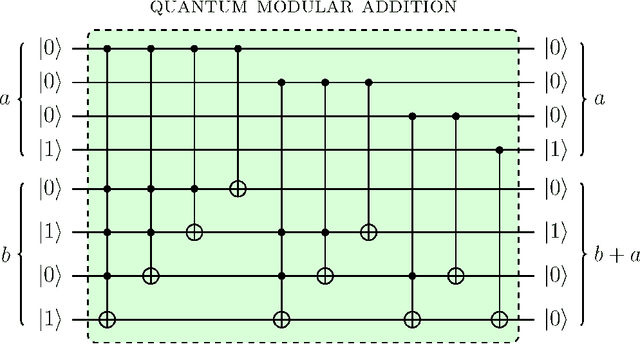
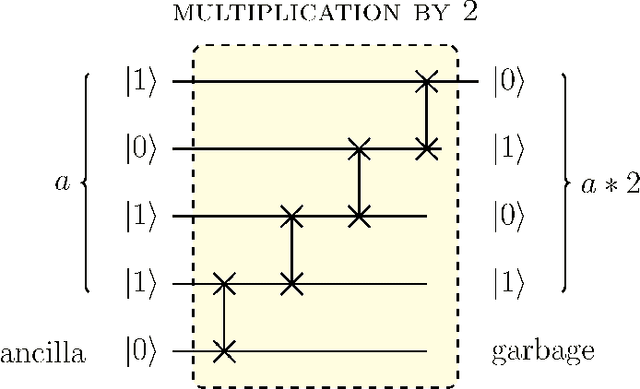
Abstract:Digital circuits based on residue number systems have been considered to produce a pseudo-random behavior. The present work is an initial step towards the complete implementation of those systems for similar applications using quantum technology. We propose the implementation of a quasi-chaotic oscillator based on quantum modular addition and multiplication and we prove that quantum computing allows the parallel processing of data, paving the way for a fast and robust multi-channel encryption/decryption scheme. The resulting structure is assessed by several experiments in order to ascertain the desired noise-like behavior.
On Effects of Compression with Hyperdimensional Computing in Distributed Randomized Neural Networks
Jun 17, 2021

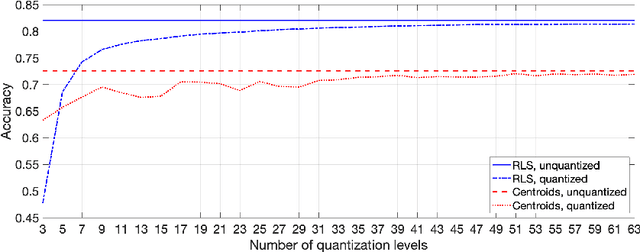
Abstract:A change of the prevalent supervised learning techniques is foreseeable in the near future: from the complex, computational expensive algorithms to more flexible and elementary training ones. The strong revitalization of randomized algorithms can be framed in this prospect steering. We recently proposed a model for distributed classification based on randomized neural networks and hyperdimensional computing, which takes into account cost of information exchange between agents using compression. The use of compression is important as it addresses the issues related to the communication bottleneck, however, the original approach is rigid in the way the compression is used. Therefore, in this work, we propose a more flexible approach to compression and compare it to conventional compression algorithms, dimensionality reduction, and quantization techniques.
Hyperdimensional Computing for Efficient Distributed Classification with Randomized Neural Networks
Jun 02, 2021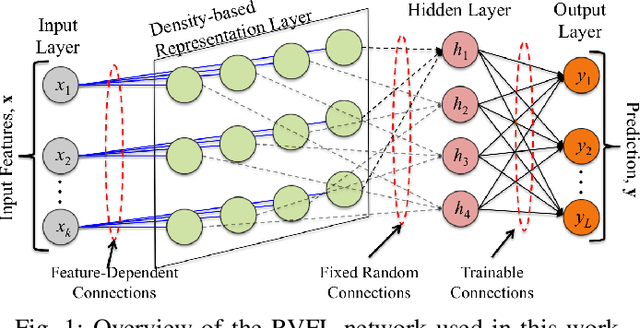
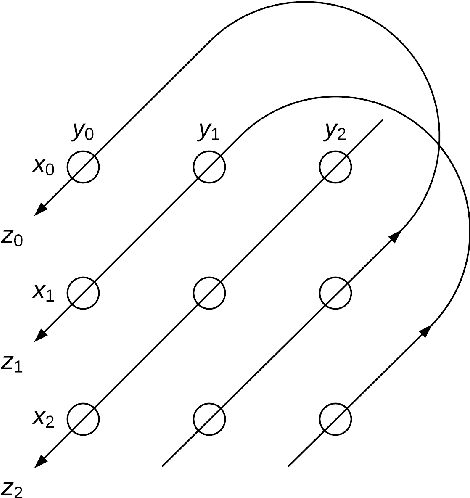
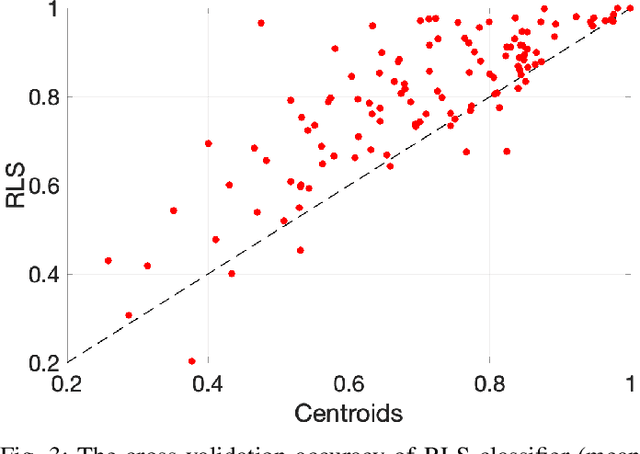
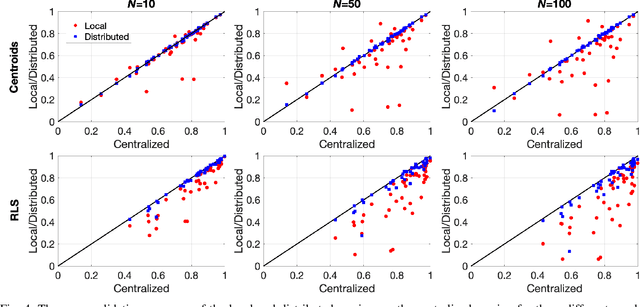
Abstract:In the supervised learning domain, considering the recent prevalence of algorithms with high computational cost, the attention is steering towards simpler, lighter, and less computationally extensive training and inference approaches. In particular, randomized algorithms are currently having a resurgence, given their generalized elementary approach. By using randomized neural networks, we study distributed classification, which can be employed in situations were data cannot be stored at a central location nor shared. We propose a more efficient solution for distributed classification by making use of a lossy compression approach applied when sharing the local classifiers with other agents. This approach originates from the framework of hyperdimensional computing, and is adapted herein. The results of experiments on a collection of datasets demonstrate that the proposed approach has usually higher accuracy than local classifiers and getting close to the benchmark - the centralized classifier. This work can be considered as the first step towards analyzing the variegated horizon of distributed randomized neural networks.
Perceptron Theory for Predicting the Accuracy of Neural Networks
Dec 14, 2020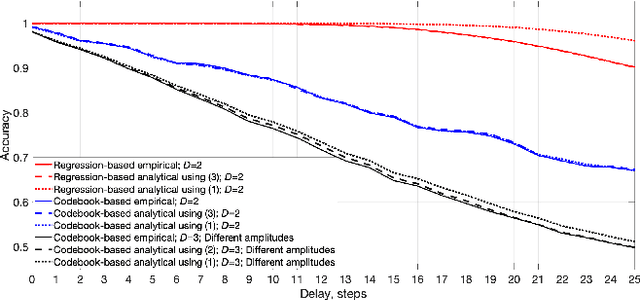
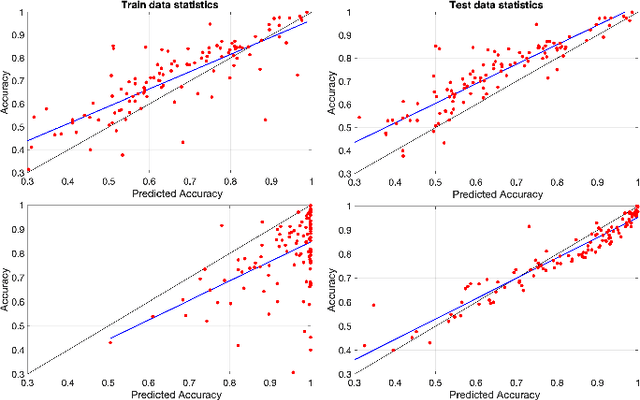
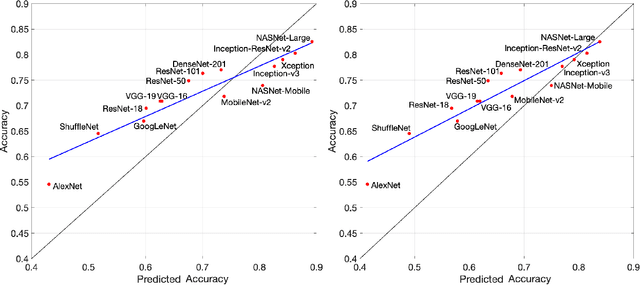
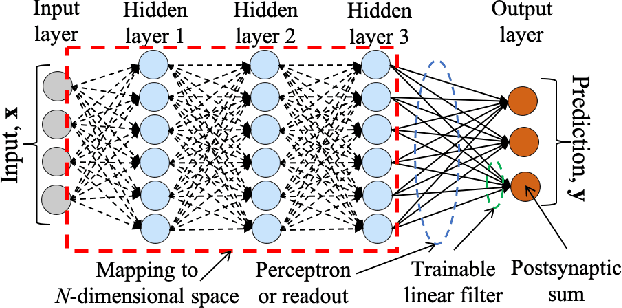
Abstract:Many neural network models have been successful at classification problems, but their operation is still treated as a black box. Here, we developed a theory for one-layer perceptrons that can predict performance on classification tasks. This theory is a generalization of an existing theory for predicting the performance of Echo State Networks and connectionist models for symbolic reasoning known as Vector Symbolic Architectures. In this paper, we first show that the proposed perceptron theory can predict the performance of Echo State Networks, which could not be described by the previous theory. Second, we apply our perceptron theory to the last layers of shallow randomly connected and deep multi-layer networks. The full theory is based on Gaussian statistics, but it is analytically intractable. We explore numerical methods to predict network performance for problems with a small number of classes. For problems with a large number of classes, we investigate stochastic sampling methods and a tractable approximation to the full theory. The quality of predictions is assessed in three experimental settings, using reservoir computing networks on a memorization task, shallow randomly connected networks on a collection of classification datasets, and deep convolutional networks with the ImageNet dataset. This study offers a simple, bipartite approach to understand deep neural networks: the input is encoded by the last-but-one layers into a high-dimensional representation. This representation is mapped through the weights of the last layer into the postsynaptic sums of the output neurons. Specifically, the proposed perceptron theory uses the mean vector and covariance matrix of the postsynaptic sums to compute classification accuracies for the different classes. The first two moments of the distribution of the postsynaptic sums can predict the overall network performance quite accurately.
 Add to Chrome
Add to Chrome Add to Firefox
Add to Firefox Add to Edge
Add to Edge